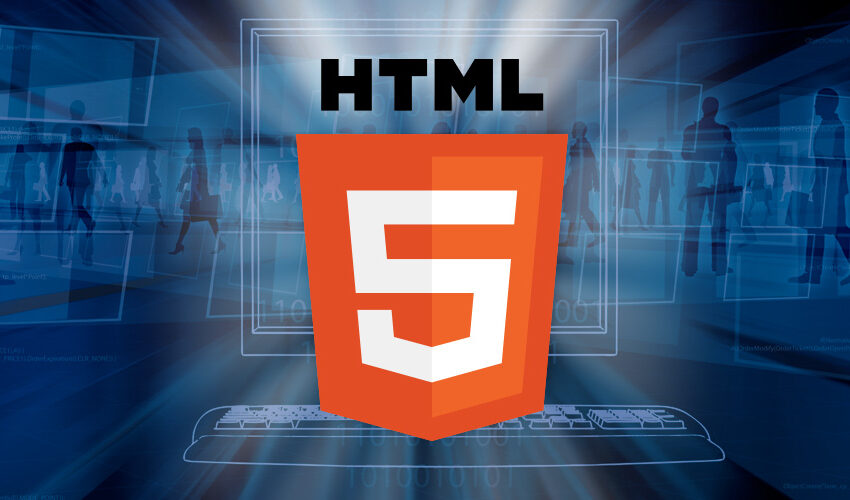
- March 30, 2021
- admin
- 0 Comments
- 2687 Views
- 0 Likes
- Social Media, Web Design
HTML5 – the fifth revision of the Hypertext Markup Language (HTML)
HTML5 is a programming language used for describing the layout and presenting the contents of Web pages. HTML5 includes the features of not only HTML 4, but also XHTML 1 and DOM Level 2 HTML. It provides support for both HTML and XHTML syntax and extends existing DOM interfaces to achieve standardised outcome.
HTML5 is cooperation between the Web Hypertext Application Technology Working Group (WHATWG) and the World Wide Web Consortium (W3C). The first was working on web forms and applications and the latter on XHTML 2.0 when the two decided to come together and work on the new version of HTML to achieve some common strategic benefits. Device independence, graphical/media support without using external plugins, better error handling, reduced scripting, quick response time and consistency in web applications are some of the key features that they aimed to seek through this association.
Below points highlight the advantages that HTML5 offers over previous versions of HTML.
- Support for media: Adding and handling graphical content on the web is much easier with the introduction of new elements such as <video>, <audio>,<canvas> and integration of scalable vector graphics (SVG) content and MathML for mathematical formulas.
- Building Offline Application cache: HTML5 can be used to write web applications that even work offline. When building the site or applications for web, the developer can specify the files that the browser should cache. This ensures the page is available offline even when refreshed.
- Need not give away existing skills: You can leverage your HTML, CSS and JavaScript skills and need not learn Flash or Silverlight for using HTML5 for media.
- Interoperability: One of the main objectives of HTML5 has been to ensure interoperability and consistent functionality across browsers. Previously a site had to be designed keeping in account how it would behave in different web browsers but with HTML5 elements, the web applications and documents behave the same way irrespective of the HTML5-compatible browser used.
Also, many of its features have been built to support low powered devices such as smartphones and tablets. - Cross Platform Mobile Development: HTML5 is mobile friendly. Its interoperability, support for Application programming interfaces (APIs) for complex applications and indiscrimination for HTML and XHTML syntax makes it a potential candidate for cross platform mobile development.
- Better handling of client-side data: The major constraint of using cookies is that the cookie data is added to every HTTP request header which in turn impacts the response time proportionately. With support for different storage in HTML5 viz. sessionStorage and localStorage, it is possible to store structured data temporarily thereby warding off cookies.
- Improved Semantics: The main aim of HTML5 is to introduce a markup that is easily readable by humans and understood by computers and devices. HTML5 tags like headers, nav, footers, aside etc. not only make it easier to comprehend the structure of a web page but also consistently increase its semantic value.
- Geolocation Support: HTML5 geolocation support can help you find your location on the basis of latitude and longitude data sent via JavaScript to the remote web server. The information returned by remote server can either be made directly available to any HTML5-compatible browser-based application or shown on a map.
- Simplified Forms: HTML5 enhanced features and extended input field list has reduced the need for JavaScript to validate form. With drag and drop tools, the process of designing forms has been simplified significantly.
- Better understanding and reduced bugs: With more and more websites opting for HTML5 as a development tool, we see a greater consistency in the backend of a web layout. This makes it easier for designers and developers to comprehend the site structure and rectify the problem areas quickly.
- Lightweight web sites and web applications: A unique combination of HTML5 and CSS3 can deliver visual effects which were only possible with Flash or Silverlight earlier. Rounded corners, shadows or animations can be created using couple of lines of code bypassing tedious process of image slicing. This allows page to load faster as downloading images or files from remote server is no longer required.
HTML5 has narrowed the difference between the device used and the content availability. Web sites and applications developed using HTML5 can be deployed on both desktop and mobile devices with equal ease. Although the language does not have an official standard and is not fully supported by any browser yet its utility in the development environment continues to strengthen its position as the most preferred language. All major browsers including Safari, Chrome, Firefox, Opera, Internet Explorer are introducing support for HTML5 features in their latest versions. With developers and browser vendors embracing it readily it is evident that the language is going to stay here for long.
